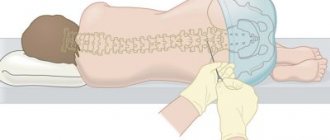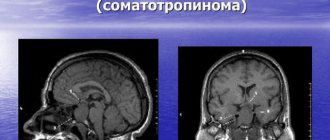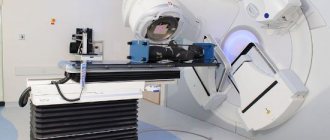Sumatriptan
Classification of the incidence of side effects according to recommendations
World Health Organization (WHO):
very often >1/10;
often from > 1/100 to < 1/10;
infrequently from > 1/100 to < 1/100;
rarely from > 1/10000 to < 1/1000;
very rarely <1/10000, including isolated reports;
frequency unknown - based on available data, it is not possible to determine the frequency of occurrence.
Nervous system disorders:
often - dizziness, drowsiness, sensory disturbances, including paresthesia and decreased sensitivity;
frequency unknown - seizures (in some cases observed in patients with a history of seizures or with concomitant conditions predisposing to seizures; in some patients no risk factors were identified), tremor, dystopia, nystagmus, scotoma, anxiety.
Cardiovascular system disorders:
often - a transient increase in blood pressure (shortly after taking the drug), hot flashes;
frequency unknown - bradycardia, tachycardia, arrhythmias, signs of transient ischemia on the ECG, coronary vasospasm, angina pectoris, myocardial infarction, decreased blood pressure, Raynaud's syndrome.
Disorders of the respiratory system, chest and mediastinal organs:
often - shortness of breath, mild transient irritation of the mucous membrane or burning sensation
in the nasal cavity or throat, nosebleeds.
Gastrointestinal disorders:
often - nausea, vomiting (cause-and-effect relationship has not been proven);
very rarely - ischemic colitis, dysphagia, abdominal discomfort, diarrhea.
Musculoskeletal and connective tissue disorders:
often - a feeling of heaviness (usually transient, can be intense and occur
any part of the body, including the chest and throat);
frequency unknown - stiff neck, arthralgia.
Visual disorders:
frequency unknown - flickering, diplopia, decreased visual acuity, loss of vision (usually transient); however, visual disturbances may be caused by the migraine attack itself.
Immune system disorders:
frequency unknown - hypersensitivity reactions, including skin manifestations,
as well as anaphylaxis.
Laboratory indicators:
very rarely - minor deviations in liver test results.
Common disorders:
often - pain, a feeling of cold or heat, a feeling of pressure or tightness (usually transient, can be intense and occur in any part of the body, including the chest and throat), weakness, fatigue (usually transient, mild or moderate expression); frequency unknown - hyperhidrosis.
Sumatriptan 100 mg
Sumatriptan should only be used in patients with an established diagnosis of migraine. The use of sumatriptan is not indicated for hemiplegic, basilar and ophthalmo-plegic migraine.
Do not exceed recommended doses of sumatriptan. As with other medications used to treat acute migraine attacks, other potentially serious neurological pathologies should be excluded before treating a headache attack in patients who have not previously been diagnosed with migraine or in patients with atypical migraine. It should be noted that patients with migraine have an increased risk of developing certain cerebrovascular events (eg, stroke or transient ischemic attack (TIA)).
After taking Sumatrintan, transient symptoms such as pain and tightness in the chest may occur. Symptoms can be intense and extend to the neck area. If there is reason to believe that these symptoms are a manifestation of coronary heart disease (CHD), further use of sumatriptan should be discontinued and appropriate diagnostic testing should be performed.
Patients with risk factors for developing coronary heart disease, incl. heavy smokers or patients using nicotine replacement therapy should not be prescribed sumatriptan without prior examination of the cardiovascular system. Particular attention should be paid to postmenopausal women and men over 40 years of age who have these risk factors. However, testing does not always detect heart disease, and in very rare cases, serious cardiac complications have occurred in patients without underlying cardiovascular disease.
Sumatriptan should be used with caution in patients with controlled mild hypertension, as a transient increase in blood pressure and peripheral vascular resistance was observed in a small number of patients.
There are rare reports from post-marketing surveillance of the development of serotonin syndrome (including mental status disorders, autonomic lability and neuromuscular disorders) as a result of concomitant use of selective serotonin reuptake inhibitors (SSRIs) and sumatriptan. The development of serotonin syndrome has also been reported during concomitant use of sumatriptan with triptans and selective norepinephrine reuptake inhibitors (SNRIs).
If concomitant use of SSRIs and/or SNRIs is clinically warranted in a patient, the patient's condition should be carefully monitored. Sumatriptan should be used with caution in patients in whom the absorption, metabolism, or excretion of sumatriptan may be significantly altered, such as patients with hepatic impairment or impaired renal function. In patients with liver failure, the initial dose should be 50 mg.
Sumatriptan should be used with caution in patients with a history of seizures or other risk factors for lowering the seizure threshold, as cases of seizures have been reported while taking sumatriptan.
In patients with established hypersensitivity to sulfonamides, taking Sumatriptan may cause allergic reactions that range from cutaneous hypersensitivity reactions to anaphylaxis. Cross-sensitivity data are limited and caution should be exercised before administering sumatriptan to these patients.
Adverse reactions may occur more frequently with the simultaneous use of triptans and medications containing St. John's wort. Long-term use of any type of painkiller for headaches can make them worse. If this situation occurs or is suspected, it is necessary to stop therapy and conduct additional examination. Drug overuse headache may be suspected in patients who experience recurrent or daily headaches despite regular use of headache medications.
Patients with rare hereditary lactose intolerance, lactase deficiency and glucose-galactose malabsorption should not take Sumatrintan, as it contains lactose.
Impact on the ability to drive vehicles and machinery
Patients with migraine may experience drowsiness associated both with the disease itself and with taking the drug Sumatriptan. Patients should be especially careful when driving vehicles and engaging in other potentially hazardous activities that require increased concentration and speed of psychomotor reactions.
SUMATRIPTAN (tablets)
and it was “enough” to not remember about supporting domestic pharmaceutical products for a long time.
But, as they say, you can’t renounce anything. The attack came suddenly, and my “ambulance” in the form of “Sumatriptan - TEVA” ran out. It turned out that the husband was responsible for the purchase of sumatriptan that day, or rather late evening. He diligently told the pharmacist at the 24-hour pharmacy the medicine I needed, but this particular sumatriptan was not available, which the faithful immediately reported. The pharmacy worker offered him our domestic sumatriptan. Remembering my negative, painful experience of admission, I wanted to categorically reject such an offer. But it was a pity to drive the tired husband to another “round the clock”, and the attack was growing. Not out of idle interest, I inquired about the manufacturer and, having learned that it was definitely not the Berezovsky Pharmaceutical Plant, gave the go-ahead for the purchase. The price is reasonable - 150 rubles (dosage 100 mg), slightly less than the Hungarian price. Manufacturer located near Moscow.
This is such a cute box. The design is a treat for the eyes of a migraine sufferer: calming, yes.
Those who have a long history of migraines may not delve into the instructions - they are no different from most similar ones, regardless of the country of origin of the drug. Sumatriptan with its contraindications and possible side effects is nothing new. This is a serious drug, you can’t just take it.
The tablet is in the form of a classic tablet, and not in the form of a pill that is familiar to me. Of course, it is more convenient to divide the pill into two parts - one part is enough for me to pacify an attack for 12 hours. Then I take the second half. Well, I had to split the pill. I washed it down with some water and waited for a double dose of side effects.
But nothing terrible happened: I experienced a completely natural state of my body, except for the throbbing pain in the left half of my skull. The tablet (or rather, part of it) acted surprisingly gently! So delicately that it was incredibly surprising for me. No “surges”, “retreats”, eclipses! It was as if she had taken a regular pill for a classic headache. What a pleasant surprise! The attack that began quickly subsided, and at the same time I retained my ability to work. That's great!
Fellow migraine sufferers! Take a closer look at "Sumatriptan" from "Canonpharma"! Perhaps, of everything you have tried, it will be the softest, most gentle in stopping an attack, as in my case. Definitely recommend!
SUMATRIPTAN
Side effects
Classification of the incidence of side effects according to the recommendations
of the World Health Organization (WHO):
very often >1/10;
often from > 1/100 to < 1/10;
infrequently from > 1/100 to < 1/100;
rarely from > 1/10000 to < 1/1000;
very rarely <1/10000, including isolated reports;
frequency unknown - based on available data, it is not possible to determine the frequency of occurrence.
Nervous system disorders:
often - dizziness, drowsiness, sensory disturbances, including paresthesia and decreased sensitivity;
frequency unknown - seizures (in some cases observed in patients with a history of seizures or with concomitant conditions predisposing to seizures; in some patients no risk factors were identified), tremor, dystopia, nystagmus, scotoma, anxiety.
Cardiovascular system disorders:
often - a transient increase in blood pressure (shortly after taking the drug), hot flashes;
frequency unknown - bradycardia, tachycardia, arrhythmias, signs of transient ischemia on the ECG, coronary vasospasm, angina pectoris, myocardial infarction, decreased blood pressure, Raynaud's syndrome.
Disorders of the respiratory system, chest and mediastinal organs:
often - shortness of breath, mild transient irritation of the mucous membrane or burning sensation
in the nasal cavity or throat, nosebleeds.
Gastrointestinal disorders:
often - nausea, vomiting (cause-and-effect relationship has not been proven);
very rarely - ischemic colitis, dysphagia, abdominal discomfort, diarrhea.
Musculoskeletal and connective tissue disorders:
often - a feeling of heaviness (usually transient, can be intense and occur
any part of the body, including the chest and throat);
frequency unknown - stiff neck, arthralgia.
Visual disorders:
frequency unknown - flickering, diplopia, decreased visual acuity, loss of vision (usually transient); however, visual disturbances may be caused by the migraine attack itself.
Immune system disorders:
frequency unknown - hypersensitivity reactions, including skin manifestations,
as well as anaphylaxis.
Laboratory indicators:
very rarely - minor deviations in liver test results.
Common disorders:
often - pain, a feeling of cold or heat, a feeling of pressure or tightness (usually transient, can be intense and occur in any part of the body, including the chest and throat), weakness, fatigue (usually transient, mild or moderate expression); frequency unknown - hyperhidrosis.










